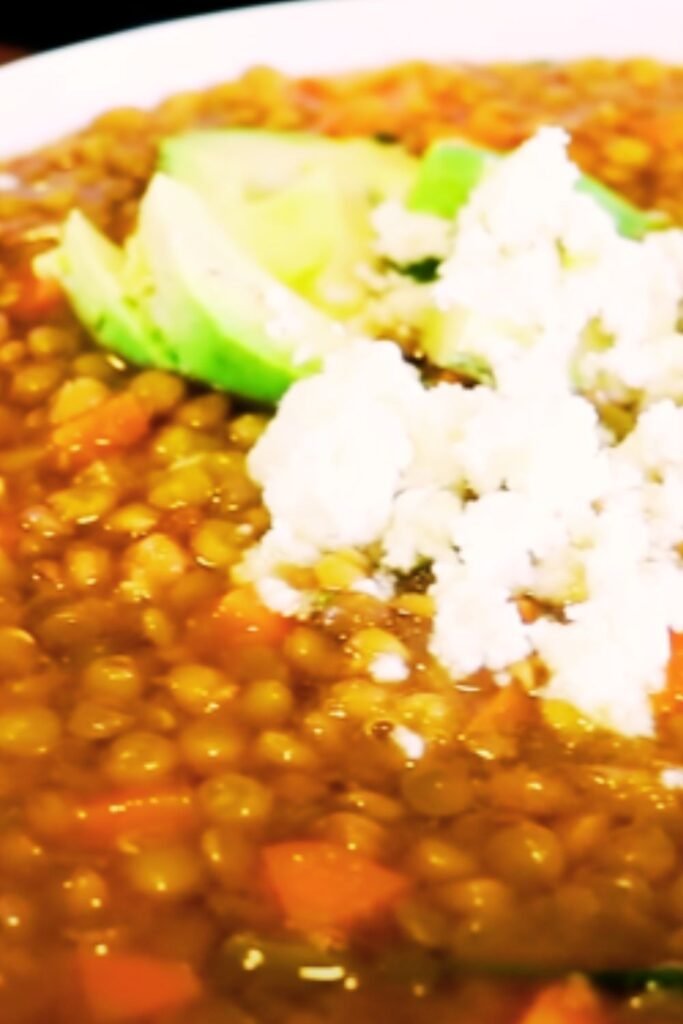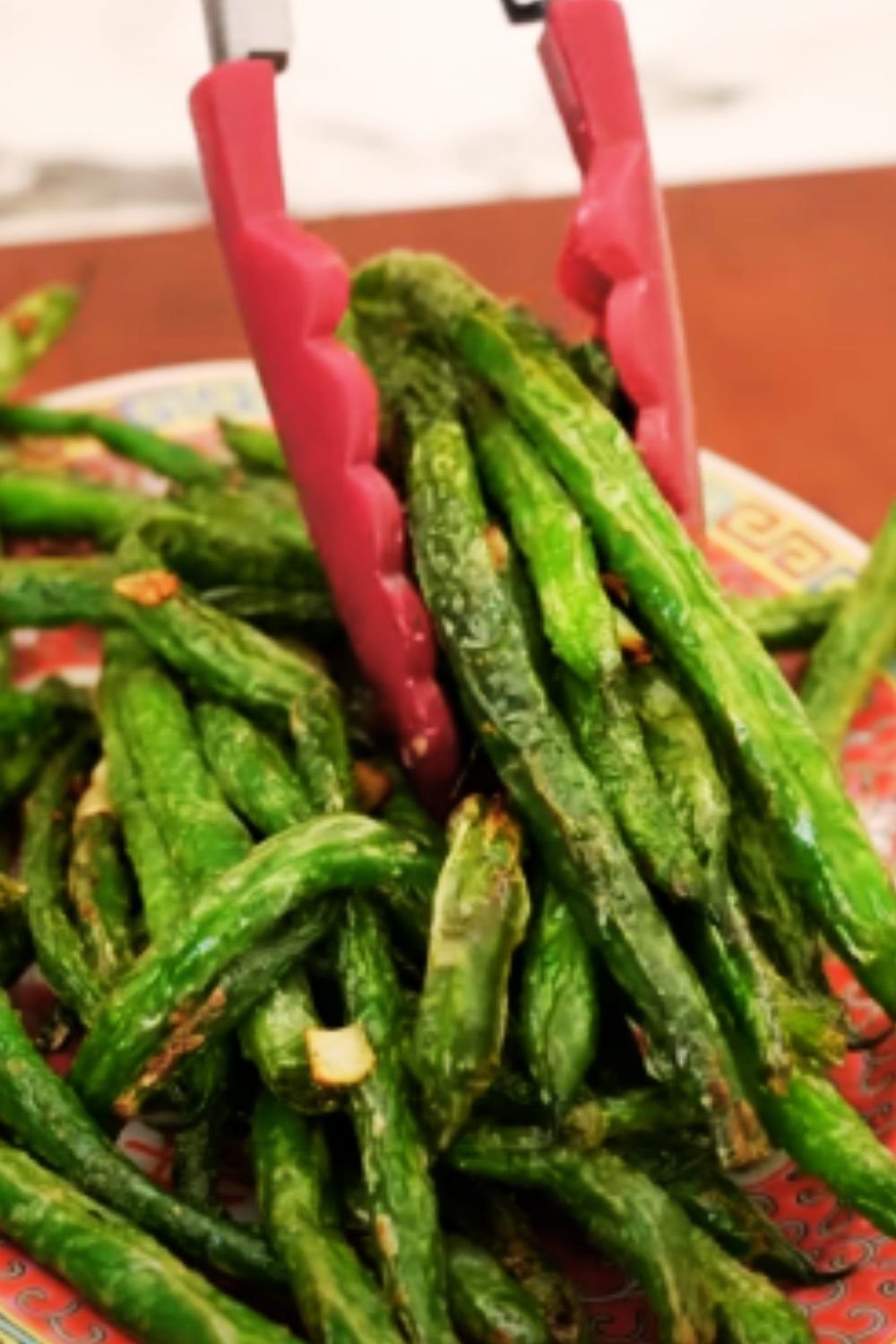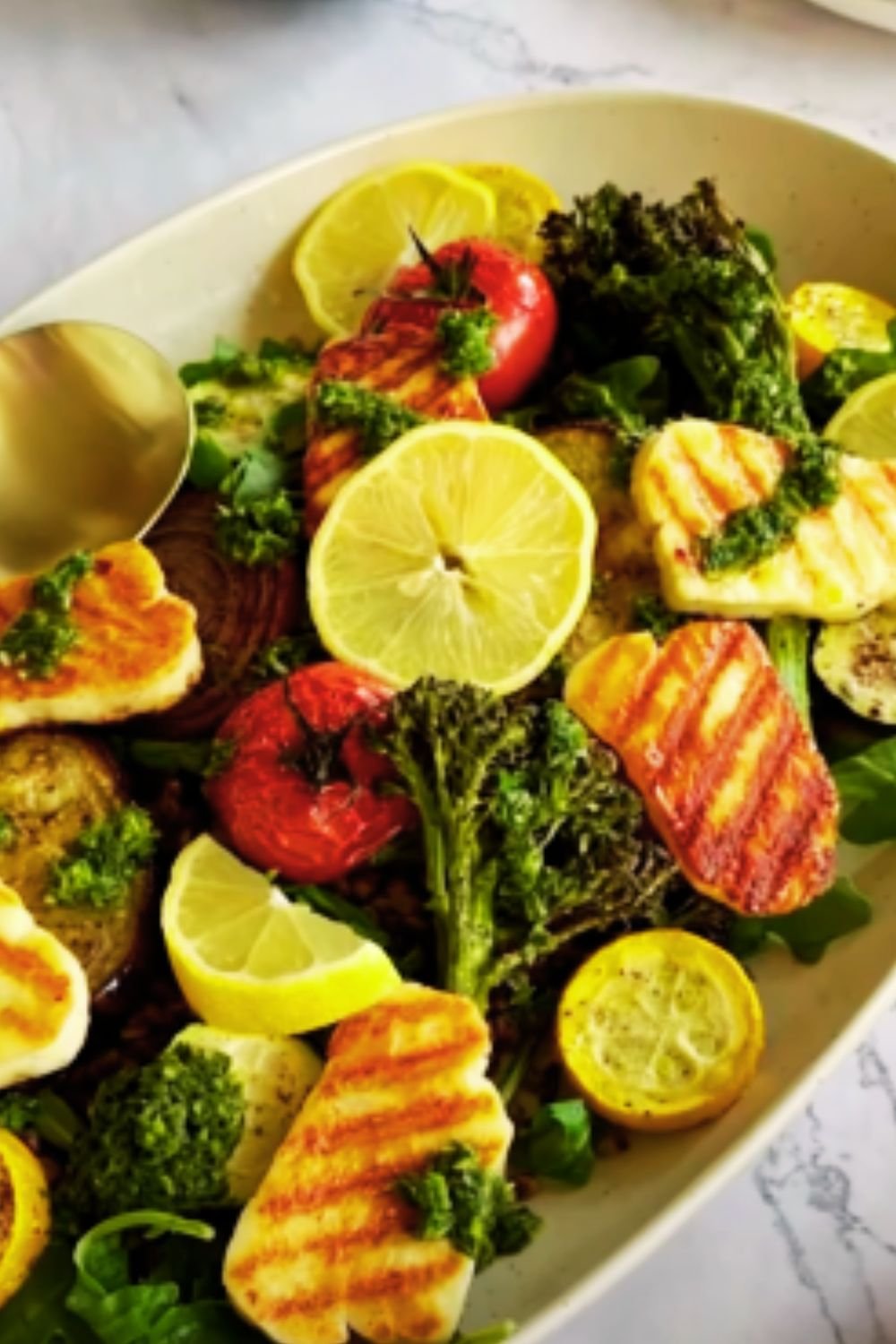There’s something profoundly comforting about a steaming bowl of soup, especially when it’s not just delicious but also packed with healing properties. Today, I’m sharing my absolute favorite anti-inflammatory red lentil soup recipe that has become a staple in my home, particularly during those times when my body needs some extra TLC.
As someone who’s experienced firsthand how diet can impact inflammation in the body, I’ve spent years perfecting recipes that taste incredible while also helping to keep inflammation at bay. This vibrant red lentil soup is the culmination of that journey—a perfect balance of protein-rich lentils, anti-inflammatory spices, and nourishing vegetables that come together in a symphony of flavors.
The Power of Anti-Inflammatory Eating
Before diving into the recipe, let’s talk about why anti-inflammatory foods matter. Chronic inflammation is linked to numerous health issues, from joint pain and digestive problems to more serious conditions like heart disease and autoimmune disorders. The foods we eat can either fuel this inflammation or help combat it.
My journey toward anti-inflammatory eating began after struggling with persistent joint pain and fatigue. When conventional treatments weren’t providing the relief I hoped for, I turned to my diet as a potential solution. The transformation was remarkable—within weeks of incorporating more anti-inflammatory foods, I noticed significant improvements in my energy levels and a noticeable reduction in pain.
This red lentil soup became my go-to remedy, not just because it’s medicinal in nature, but because it’s genuinely delicious. Even my family members who initially scoffed at the idea of “healing food” request this soup regularly!
Star Ingredients and Their Benefits
The magic of this soup lies in its powerhouse ingredients. Let’s explore what makes each component so beneficial:
Red Lentils
These tiny legumes aren’t just quick-cooking and delicious; they’re packed with protein, fiber, and essential minerals. The soluble fiber in lentils helps lower cholesterol and stabilize blood sugar levels, while their high protein content makes this soup satisfying without adding inflammatory animal products.
Turmeric
This golden spice contains curcumin, one of nature’s most potent anti-inflammatory compounds. Studies have shown that curcumin can be as effective as some anti-inflammatory drugs, without the side effects.
Ginger
Fresh ginger contains gingerol, a bioactive compound that has powerful anti-inflammatory and antioxidant effects. It’s particularly effective for reducing muscle pain and soreness.
Garlic
Beyond adding depth of flavor, garlic contains compounds that help boost the immune system and reduce inflammation markers in the body.
Extra Virgin Olive Oil
Rich in oleocanthal, a compound with similar anti-inflammatory properties to ibuprofen, good quality olive oil is the perfect base for sautéing our aromatics.
Vegetables
Carrots, onions, and leafy greens provide a range of antioxidants and phytonutrients that help neutralize free radicals and reduce oxidative stress—a key contributor to inflammation.

The Science Behind Anti-Inflammatory Foods
What makes a food “anti-inflammatory”? It comes down to how certain compounds in these foods interact with our body’s inflammatory response system. Here’s a breakdown of the scientific mechanisms at work:
| Compound | Found In | Mechanism of Action | Benefits |
|---|---|---|---|
| Curcumin | Turmeric | Blocks NF-kB, a molecule that turns on inflammation genes in cell nuclei | Reduces inflammation markers, may help with arthritis pain |
| Gingerol | Ginger | Inhibits production of pro-inflammatory cytokines | Reduces muscle pain, helps with digestion, lowers inflammation |
| Allicin | Garlic | Suppresses inflammatory mediators | Boosts immune function, reduces inflammation |
| Oleocanthal | Extra Virgin Olive Oil | Inhibits COX-1 and COX-2 enzymes (similar to ibuprofen) | Reduces pain sensitivity, lowers inflammation |
| Quercetin | Onions | Stabilizes mast cells that release histamine | Reduces allergic responses and related inflammation |
| Beta-carotene | Carrots | Acts as an antioxidant | Neutralizes free radicals that can trigger inflammation |
| Fiber | Lentils | Feeds beneficial gut bacteria | Improves gut health, which reduces systemic inflammation |
Now that you understand why these ingredients are so beneficial, let’s get cooking!
Anti-Inflammatory Red Lentil Soup Recipe
Ingredients
- 2 cups dry red lentils, rinsed and drained
- 1 large onion, finely diced
- 3 cloves garlic, minced
- 2 carrots, diced
- 1 tablespoon fresh ginger, grated
- 2 teaspoons ground turmeric
- 1 teaspoon ground cumin
- 1/2 teaspoon ground coriander
- 1/4 teaspoon cayenne pepper (adjust to taste)
- 2 tablespoons extra virgin olive oil
- 6 cups vegetable broth (low sodium)
- 1 can (14 oz) diced tomatoes
- 2 cups fresh spinach or kale, chopped
- Juice of 1 lemon
- Fresh cilantro or parsley for garnish
- Sea salt and freshly ground black pepper to taste
Equipment Needed
- Large soup pot or Dutch oven
- Cutting board and knife
- Measuring spoons and cups
- Wooden spoon
- Immersion blender (optional)
Instructions
- Prepare the lentils: Rinse the red lentils thoroughly under cold water until the water runs clear. Drain well and set aside.
- Sauté the aromatics: Heat the olive oil in a large pot over medium heat. Add the diced onion and sauté for 3-4 minutes until translucent. Add the minced garlic and grated ginger, cooking for another minute until fragrant.
- Add the spices: Stir in the turmeric, cumin, coriander, and cayenne pepper. Toast the spices for 30 seconds to release their flavors, stirring constantly to prevent burning.
- Cook the vegetables: Add the diced carrots and cook for 2-3 minutes, stirring occasionally.
- Add lentils and liquids: Add the rinsed lentils, diced tomatoes with their juices, and vegetable broth. Stir well to combine.
- Simmer: Bring the mixture to a boil, then reduce heat to low. Cover and simmer for 20-25 minutes, or until the lentils are tender and breaking down.
- Adjust texture (optional): For a creamier soup, use an immersion blender to partially blend the soup, leaving some texture.
- Add greens and finish: Stir in the chopped spinach or kale and continue cooking just until wilted, about 2-3 minutes.
- Final touches: Remove from heat and stir in the lemon juice. Season with salt and pepper to taste.
- Serve: Ladle into bowls and garnish with fresh cilantro or parsley and a drizzle of extra virgin olive oil if desired.

Tips for the Perfect Anti-Inflammatory Soup
- Bloom the spices properly: Toasting the spices in oil helps release their fat-soluble compounds, enhancing both flavor and anti-inflammatory properties.
- Don’t skip the acid: The lemon juice isn’t just for flavor—vitamin C helps your body absorb the iron from the lentils and enhances the bioavailability of turmeric’s active compounds.
- Use fresh turmeric if available: While ground turmeric works well, fresh turmeric root (about 1 tablespoon grated) provides even more potent anti-inflammatory benefits.
- Black pepper matters: Adding a generous twist of freshly ground black pepper increases the bioavailability of curcumin in turmeric by up to 2,000%. It’s not just for taste!
- Make it your own: This soup is incredibly versatile. Feel free to add other anti-inflammatory ingredients like bell peppers, celery, or sweet potatoes.
Storage and Meal Prep
One of the things I love most about this soup is how well it stores. The flavors actually develop and deepen over time, making it perfect for meal prep.
- Refrigerator: Store in an airtight container for up to 5 days.
- Freezer: Freeze portions in freezer-safe containers for up to 3 months.
- Reheating: Warm gently on the stovetop, adding a splash of water or broth if needed to thin the soup as it will thicken when stored.
Nutritional Breakdown
Let’s take a look at the impressive nutritional profile of this healing soup:
| Nutrient | Amount Per Serving | % Daily Value | Anti-Inflammatory Benefit |
|---|---|---|---|
| Calories | 310 | – | Balanced energy without excess calories |
| Protein | 18g | 36% | Supports tissue repair and immune function |
| Fiber | 15g | 60% | Feeds beneficial gut bacteria, reduces inflammation |
| Iron | 6mg | 33% | Supports oxygen transport and energy production |
| Vitamin A | 6570 IU | 131% | Powerful antioxidant that reduces oxidative stress |
| Vitamin C | 24mg | 40% | Supports collagen production and immune function |
| Magnesium | 71mg | 18% | Natural muscle relaxant, reduces inflammation |
| Potassium | 890mg | 25% | Helps maintain fluid balance and nerve function |
| Folate | 358mcg | 90% | Essential for cell division and DNA repair |
| Curcumin | ~200mg | – | Potent anti-inflammatory compound |
Values are approximate and based on 1 serving (about 1.5 cups)
Serving Suggestions
To create a complete anti-inflammatory meal, pair this soup with:
- A slice of whole grain sourdough bread (fermentation reduces inflammatory compounds in wheat)
- A side salad with dark leafy greens, avocado, and a lemon-olive oil dressing
- A spoonful of plain Greek yogurt or coconut yogurt on top for creaminess and probiotics
- A sprinkle of pumpkin or sunflower seeds for added crunch and omega-3 fatty acids
- A warming cup of ginger or turmeric tea

Variations to Try
Once you’ve mastered the basic recipe, get creative with these anti-inflammatory variations:
Thai-Inspired Version
Add a tablespoon of red curry paste and swap half the broth for coconut milk. Finish with fresh Thai basil and a squeeze of lime instead of lemon.
Mediterranean Twist
Add chopped bell peppers with the carrots and stir in some chopped olives and a teaspoon of dried oregano toward the end of cooking.
Indian Dal Style
Double the spices and add a teaspoon each of garam masala and mustard seeds. Finish with a tempered oil (heat oil with mustard seeds, cumin seeds, and curry leaves) drizzled on top.
Detox Green Version
Add a cup of chopped broccoli with the carrots and double the greens. Finish with fresh parsley and a tablespoon of nutritional yeast for a cheesy flavor.
My Personal Experience
I’ve made this soup countless times, and it never fails to provide comfort and relief when inflammation flares up. After a particularly tough workout, a stressful week, or at the first sign of seasonal sniffles, this is my go-to remedy.
What I’ve noticed most consistently is how this soup helps with joint pain. As someone who enjoys high-intensity workouts but sometimes pays the price with achy knees, I’ve found that having this soup for dinner after a challenging session results in noticeably less stiffness the following morning.
The anti-inflammatory effects seem cumulative too. When I include this soup in my meal rotation at least once a week, I experience better digestion, clearer skin, and improved energy levels overall.
Questions and Answers
Q: Can I use green or brown lentils instead of red?
While you can substitute other lentils, red lentils are specifically chosen for this recipe because they cook quickly and break down to create a naturally creamy texture. Green or brown lentils hold their shape and require longer cooking times (about 35-40 minutes). If using these varieties, you’ll get a chunkier soup with a different texture.
Q: How can I increase the protein content of this soup?
The lentils already provide a good amount of plant-based protein, but if you’re looking to boost it further, consider adding a scoop of unflavored collagen peptides (if you consume animal products) or a quarter cup of hemp hearts blended into the soup. Both will integrate seamlessly without altering the flavor profile significantly.
Q: Is this soup suitable for all anti-inflammatory diets?
This soup is compatible with most anti-inflammatory approaches, including Mediterranean and whole-food plant-based diets. However, if you’re following a specific protocol like AIP (Autoimmune Protocol), you’ll need to omit the nightshades (tomatoes and cayenne) and seed-based spices. In that case, try using pumpkin or butternut squash puree for body and sweetness instead of tomatoes.
Q: How can I make this soup even more potent for inflammation relief?
To maximize anti-inflammatory benefits, add a tablespoon of ground flaxseed or hemp seeds when serving, increase the turmeric to 1 tablespoon (paired with additional black pepper), and consider adding a knob of fresh turmeric root in addition to the powdered form. Some people also find that adding medicinal mushrooms like reishi or lion’s mane (in powder form) boosts the anti-inflammatory effects.
Q: My turmeric always seems to taste bitter. Any tips?
Turmeric can taste bitter if it’s old or if it’s added in large quantities without being properly bloomed in fat. Make sure you’re using fresh turmeric powder (replace it every six months), and always toast it in oil before adding the liquids. Balancing with a touch more sweetness from the carrots or even a teaspoon of honey can also help counteract any bitterness.
Q: Can children eat this soup?
Absolutely! This soup is perfect for the whole family. For young children who might be sensitive to spice, simply reduce or omit the cayenne pepper. The vibrant color and natural sweetness from the carrots and onions make it appealing to many kids. You can also serve it with fun toppings like a swirl of yogurt or tiny star-shaped whole grain croutons to make it more enticing.
Conclusion
This anti-inflammatory red lentil soup is more than just a meal—it’s a form of self-care in a bowl. By incorporating this nutrient-dense, healing soup into your regular meal rotation, you’re not just satisfying hunger; you’re actively supporting your body’s natural ability to manage inflammation.
I’ve found that making proactive food choices like this has transformed my relationship with my health. Rather than only reacting to inflammation after it becomes problematic, I now use foods like this soup as part of my regular wellness routine.
Remember that consistency is key with anti-inflammatory eating. One bowl of this soup won’t counteract an otherwise inflammatory diet, but making it part of a broader approach to nourishing your body can lead to remarkable changes over time.
I’d love to hear about your experience if you try this recipe! What variations did you create? Did you notice any changes in how you feel? The beautiful thing about healing foods is that they can be endlessly personalized to suit your unique needs and preferences.
Here’s to delicious food that loves your body as much as your taste buds!


